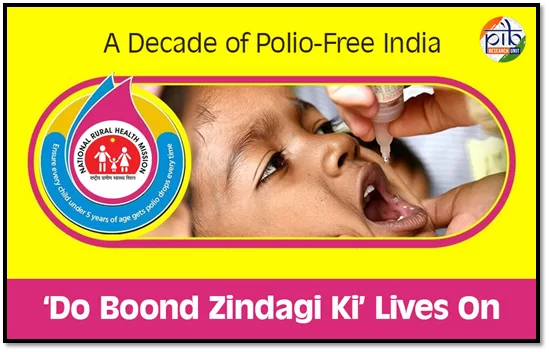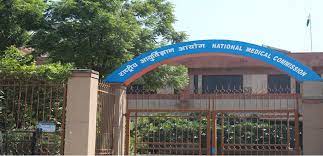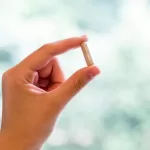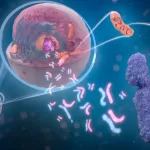India’s achievement of polio-free status in 2014 represents one of the most significant successes in global public health. The eradication of polio was not a singular event, but the culmination of decades of dedicated efforts, starting with India’s participation in the Global Polio Eradication Initiative (GPEI) and complemented by the robust national immunization efforts under the Universal Immunization Programme (UIP). The strategic integration of new vaccines, innovative surveillance systems, and government-led immunization campaigns played a crucial role in making India polio-free. This achievement was made possible through the tireless efforts of the Government of India in partnership with key global organizations, including UNICEF, the World Health Organization (WHO), the Bill & Melinda Gates Foundation, Rotary International, and the Center for Disease Control and Prevention (CDC). Together, they mobilized resources, provided technical expertise, and created widespread public awareness about the critical need to vaccinate every child under five against polio.
Immunization in India
India’s immunization efforts can be traced back to 1978, when the Expanded Programme on Immunization (EPI) was launched. This program aimed to provide vaccines to children against various diseases. In 1985, this program was renamed the Universal Immunization Programme (UIP), broadening its reach to rural areas beyond urban centers. Over time, the UIP became an integral part of several national health initiatives, including the National Rural Health Mission (NRHM), launched in 2005 to improve the health of rural populations.
Today, UIP is one of the world’s largest public health programs, targeting over 2.67 crore newborns and 2.9 crore pregnant women annually, providing free vaccines for 12 vaccine-preventable diseases. Polio was one of the first diseases targeted under UIP, and its elimination became a key public health milestone.
Key Milestones in Polio Eradication
- Pulse Polio Programme Launch (1995)
India’s fight against polio took a significant step forward in 1995 with the launch of the Pulse Polio Immunization Programme. The first large-scale vaccination campaign, held on 2nd October 1994 (Gandhi Jayanti) in Delhi, was the precursor to the national Pulse Polio campaign. The campaign used an Oral Polio Vaccine (OPV) strategy, reaching over 1 million children and ensuring every child under five was vaccinated. This model was subsequently scaled up nationwide.
The campaign became iconic, with the slogan “Do Boond Zindagi Ki” (Two drops of life) becoming synonymous with India’s efforts to eliminate polio.
- Routine Immunization and System Strengthening
While Pulse Polio campaigns were essential for mass immunization, India also strengthened its routine immunization efforts under the Universal Immunization Programme (UIP). The UIP provided free vaccines against polio, diphtheria, pertussis (whooping cough), tetanus, measles, hepatitis B, and tuberculosis, ensuring that children received vaccinations as per the national immunization schedule. Through these routine efforts, India aimed to maintain high immunity levels and prevent the re-emergence of vaccine-preventable diseases.
India also made significant strides in cold chain management, ensuring that vaccines were stored and transported at the correct temperatures. The establishment of the National Cold Chain Training Centre (NCCTE) and the Electronic Vaccine Intelligence Network (eVIN) played crucial roles in improving vaccine storage and distribution logistics.
- Inactivated Polio Vaccine (IPV) Introduction (2015)
In line with the Global Polio Endgame Strategy, India introduced the Inactivated Polio Vaccine (IPV) in 2015 as part of its commitment to polio eradication. IPV provides additional protection against polio, especially against type 2 poliovirus, and was gradually introduced in six states before being expanded nationwide by 2016. This switch was essential after the global shift from trivalent OPV (tOPV) to bivalent OPV (bOPV), which excludes the type 2 strain, and IPV ensured continued protection.
- Surveillance and Monitoring
India’s success in polio eradication was largely due to its rigorous surveillance systems, including Acute Flaccid Paralysis (AFP) Surveillance and Environmental Surveillance. The focus on surveillance helped India detect and respond to any potential outbreaks quickly.
- AFP Surveillance: This system involves monitoring cases of unexplained paralysis in children under 15, as this is a common symptom of polio.
- Environmental Surveillance: Monitoring sewage water to detect poliovirus strains also helped identify pockets where the virus may still be circulating.
By maintaining a high level of sensitivity in surveillance, India could track and control any residual poliovirus transmission.
- Political Will and Community Engagement
One key factor behind India’s polio eradication success was the unwavering political will demonstrated by the central and state governments. Political leaders at all levels provided consistent support, ensuring that resources were allocated and the program received the needed attention.
Additionally, community engagement played a pivotal role. Health workers, volunteers, and local leaders helped raise awareness, provided information on the importance of vaccination, and ensured that children in even the most remote areas were immunized. The Pulse Polio campaigns also relied heavily on door-to-door efforts, reaching children in difficult-to-reach areas.
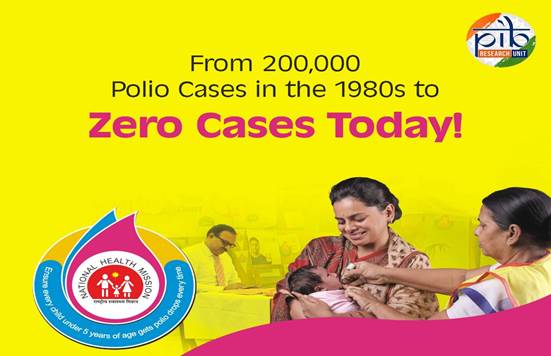
Certification and Final Leap
In 2011, India saw the last case of wild poliovirus in Howrah, West Bengal. Following that, the country ramped up its surveillance efforts, and no further wild poliovirus cases were reported.
For India to be certified as polio-free by the World Health Organization (WHO), the country had to meet stringent criteria. These included three years of no wild poliovirus transmission, robust surveillance systems, and the destruction of any remaining stocks of the virus. The certification process was rigorous, involving comprehensive checks and evaluations by the Regional Polio Certification Commission.
On 27th March 2014, India was officially declared polio-free, a milestone celebrated not just within the country but globally as an example of successful public health intervention.
Beyond Certification: Staying Alert & Safe!
Even after being declared polio-free, India continues to take several preventive measures to maintain its polio-free status:
- Annual Polio Campaigns: India continues to conduct National Immunization Days (NID) and Sub-National Immunization Days (SNID) annually to keep immunity levels high and ensure that no child is missed.
- Surveillance and Border Vaccination: Continuous surveillance through AFP and environmental monitoring remains critical. Vaccination at international borders continues to mitigate the risk of polio re-importation from endemic regions.
- New Vaccines and Expansion: In addition to IPV, India has introduced several new vaccines under its immunization program, including Rotavirus, Pneumococcal Conjugate Vaccine (PCV), and Measles-Rubella (MR) vaccine, as part of broader efforts to prevent other vaccine-preventable diseases.
- Mission Indradhanush: Launched in 2014, Mission Indradhanush (MI) aims to increase immunization coverage to 90%. Special attention is given to hard-to-reach areas with low immunization rates. In its Intensified Mission Indradhanush phase, the program has significantly increased immunization coverage, further reinforcing India’s commitment to child health.
Conclusion
India’s journey to becoming polio-free is a remarkable story of determination, collaboration, and innovation. The country’s achievement was the result of an integrated approach combining mass immunization campaigns, strong political leadership, effective surveillance systems, and community mobilization efforts. With continued vigilance and sustained immunization efforts, India remains committed to maintaining its polio-free status and contributing to the global goal of eradicating polio once and for all.
The success of the Pulse Polio Programme and the Universal Immunization Programme serves as an inspiration for other nations and highlights the transformative power of public health interventions when supported by effective systems, robust policy, and community involvement.
Reference:
https://pib.gov.in/Pressreleaseshare.aspx?PRID=1542730
https://mohfw.gov.in/sites/default/files/Requirement%20of%20Polio%20Vaccination.pdf
https://pib.gov.in/PressReleasePage.aspx?PRID=1588770
https://nhm.gov.in/index1.php?lang=1&level=2&sublinkid=824&lid=220
https://www.unicef.org/india/our-history

